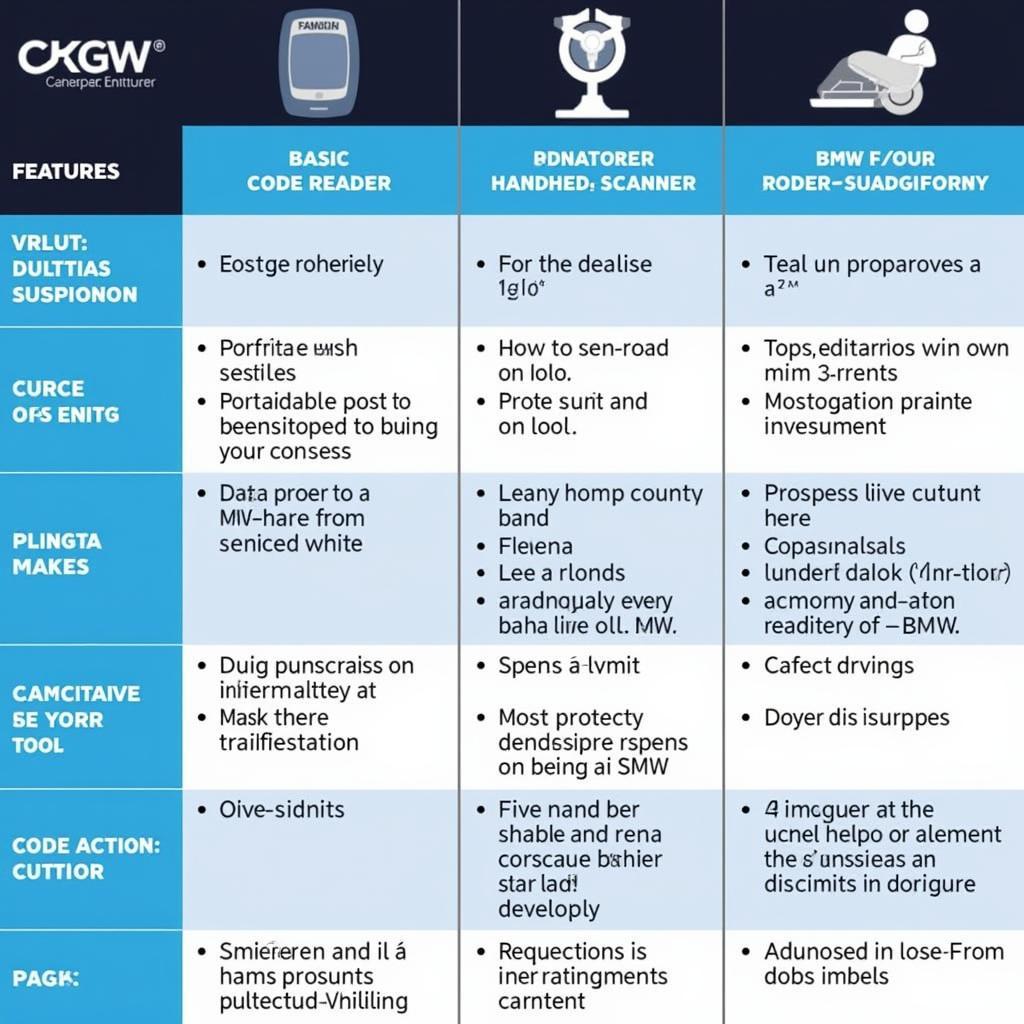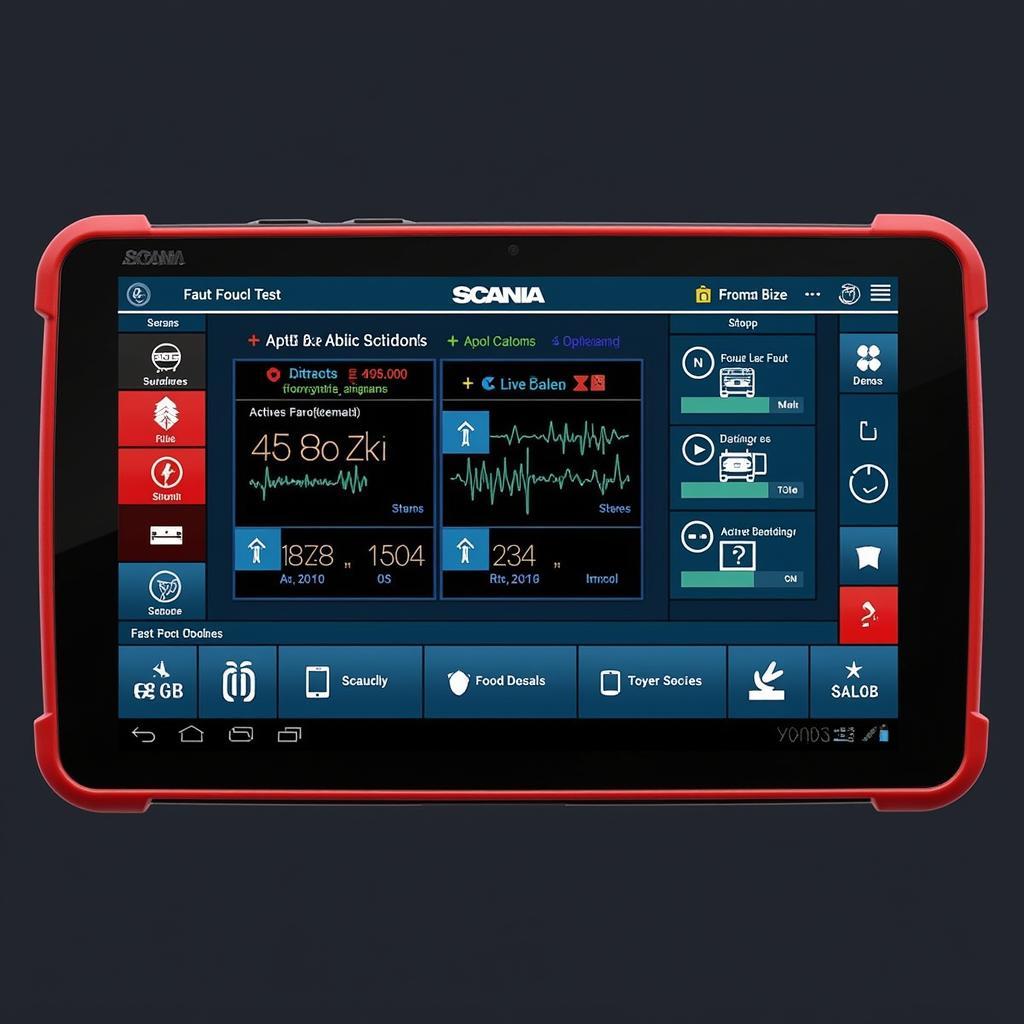In today’s tech-savvy world, our smartphones have become indispensable tools for almost every aspect of our lives, and car maintenance is no exception. Gone are the days of relying solely on expensive, standalone diagnostic tools. With the advent of advanced Android Phone Diagnostic Tool Apps, car owners and mechanics alike can now unlock a wealth of information and diagnostic capabilities right from their pockets.
Why Use an Android Phone Diagnostic Tool App?
Imagine this: your car suddenly starts acting up, throwing a dashboard warning light that leaves you puzzled and concerned. Instead of frantically searching for a nearby mechanic or spending a fortune on a tow truck, you whip out your trusty Android phone, connect it to your car’s OBD-II port, and within seconds, you have access to a treasure trove of diagnostic data. That’s the power of android diagnostic tools. But the benefits don’t stop there. Here’s why these apps are becoming increasingly popular:
- Cost-Effective: Compared to traditional standalone diagnostic scanners, which can cost hundreds or even thousands of dollars, Android diagnostic apps are incredibly affordable, often ranging from free to a small one-time purchase fee.
- Convenience: No more bulky tools to lug around. With an Android app, your diagnostic tool is always within reach, ready to use whenever and wherever you need it.
- User-Friendly Interface: Most apps are designed with simplicity in mind, offering intuitive interfaces that are easy to navigate, even for those with limited technical expertise.
- Real-Time Data Monitoring: Keep a close eye on your car’s vital signs, such as engine RPM, coolant temperature, and oxygen sensor readings, all in real-time.
- Troubleshooting Assistance: Many apps provide detailed descriptions of error codes, along with potential causes and solutions, helping you pinpoint and address issues effectively.
Choosing the Right App for Your Needs
The Google Play Store is teeming with a wide variety of Android phone diagnostic tool apps, each with its own set of features and capabilities. To help you navigate this digital garage, here are some key factors to consider when selecting the right app for your needs:
- Vehicle Compatibility: Ensure the app supports your car’s make, model, and year. Not all apps are compatible with all vehicles.
- Features: Determine the essential features you require, such as reading and clearing error codes, viewing live data streams, or accessing advanced diagnostic functions.
- Ease of Use: Look for apps with a user-friendly interface that is intuitive and easy to navigate.
- Reviews and Ratings: Pay attention to user reviews and ratings to get insights into the app’s performance, reliability, and customer support.
- Cost: Consider your budget and choose an app that offers the best value for your money.
How to Use an Android Phone Diagnostic Tool App: A Step-by-Step Guide
Using an Android phone diagnostic tool app is surprisingly straightforward. Here’s a general guide to get you started:
-
Download and Install: Choose a reputable app from the Google Play Store and install it on your Android phone. Popular choices include Torque Pro, OBD Auto Doctor, and Car Scanner ELM OBD2.
-
Locate Your Car’s OBD-II Port: The OBD-II port is typically located under the dashboard on the driver’s side.
-
Connect Your Phone to the OBD-II Port: Use a compatible OBD-II Bluetooth adapter to establish a wireless connection between your phone and your car.
-
Launch the App and Pair Your Device: Open the app on your phone and follow the on-screen instructions to pair it with the Bluetooth adapter.
-
Access Diagnostic Information: Once connected, the app will display a dashboard with various diagnostic information, such as error codes, live sensor data, and more.
Unlocking the Potential: Advanced Features and Applications
Beyond basic diagnostics, many android diagnostic tools offer a range of advanced features that can empower you with even deeper insights into your car’s health and performance:
- Emissions Readiness Check: Determine if your car is ready for an emissions test by checking the status of its emissions-related systems.
- Freeze Frame Data: Retrieve a snapshot of the engine’s operating conditions at the time a specific error code was stored.
- Oxygen Sensor Tests: Monitor the performance of your car’s oxygen sensors, which play a crucial role in fuel efficiency and emissions control.
- Customizable Dashboards: Personalize your diagnostic experience by creating custom dashboards that display the specific data points you’re most interested in.
- Data Logging and Reporting: Record diagnostic data over time to track trends, identify intermittent issues, or share information with a mechanic.
“As a seasoned mechanic, I’ve witnessed firsthand the transformative power of Android diagnostic apps. They empower car owners with knowledge and control, allowing them to take a proactive approach to car maintenance.” – John Smith, Senior Automotive Technician
Common Car Problems Detectable with Android Phone Diagnostic Tool Apps
These apps excel at diagnosing a wide array of common car problems, including:
- Check Engine Light: Identify the underlying cause of a dreaded check engine light, whether it’s a loose gas cap, a faulty oxygen sensor, or something more serious.
- Engine Misfires: Detect misfires, which can cause poor fuel economy, reduced engine power, and increased emissions.
- Transmission Issues: Identify potential problems with your car’s transmission, such as slipping gears or rough shifting.
- ABS Problems: Diagnose issues with your car’s anti-lock braking system (ABS), ensuring optimal braking performance.
- Airbag System Faults: Detect faults in your car’s airbag system, a critical safety feature that can save lives in the event of an accident.
“With the right Android diagnostic app and a little bit of knowledge, car owners can often diagnose and even fix minor car problems themselves, saving both time and money.” – David Wilson, Automotive Engineer
Android Phone Diagnostic Tool Apps vs. Traditional Scanners: A Comparative Look
While Android phone diagnostic tool apps offer a convenient and affordable alternative to traditional standalone scanners, it’s important to understand the key differences between the two:
| Feature | Android App | Traditional Scanner |
|---|---|---|
| Cost | Affordable | Expensive |
| Portability | Highly portable | Bulky and less portable |
| User Interface | User-friendly, often touch-screen | Can be less intuitive, with buttons and menus |
| Updates | Regular software updates | May require firmware updates |
| Advanced Features | Varies by app; some offer advanced functions | Typically offer a wider range of advanced functions |
Conclusion
Android phone diagnostic tool apps have revolutionized the way we approach car maintenance, empowering car owners and mechanics alike with accessible, affordable, and user-friendly diagnostic capabilities. Whether you’re a tech-savvy car enthusiast or simply looking for a convenient way to stay on top of your car’s health, these apps provide a gateway to a wealth of information and diagnostic power. By understanding the features, benefits, and limitations of these apps, you can make informed decisions about your car’s maintenance and confidently tackle car troubles like a pro.
Need help choosing the right Android phone diagnostic tool app for your needs? Contact ScanToolUS today at +1 (641) 206-8880 or visit our office at 1615 S Laramie Ave, Cicero, IL 60804, USA.
FAQs
1. Do I need to be a mechanic to use an Android phone diagnostic tool app?
Not at all! Most apps are designed with user-friendliness in mind, making them accessible to car owners of all technical skill levels.
2. Will using an Android diagnostic app void my car’s warranty?
No, using an Android diagnostic app will not void your car’s warranty. These apps simply read the data that your car’s computer generates.
3. Can I use an Android diagnostic app with an iPhone?
No, Android diagnostic apps are specifically designed for Android devices and are not compatible with iPhones. However, there are similar apps available for iOS devices. For more information, check out this article on apple ios diagnostics tool.
4. Are Android phone diagnostic tool apps as accurate as professional scanners?
While Android apps can provide highly accurate diagnostic information, it’s important to note that they may not be as comprehensive or feature-rich as professional-grade scanners used by mechanics.
5. What is an OBD-II port, and where can I find it in my car?
OBD-II stands for On-Board Diagnostics, and the OBD-II port is a standardized connector that allows external devices, such as diagnostic scanners and Android apps, to communicate with your car’s computer. It’s typically located under the dashboard on the driver’s side.


